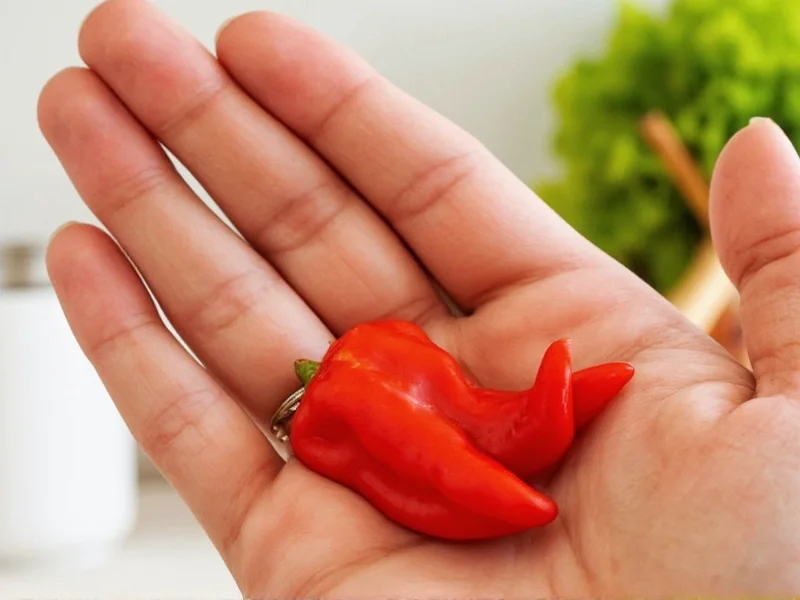When you've handled hot peppers like jalapeños, habaneros, or ghost peppers, that burning sensation on your hands is caused by capsaicin—the oil-based compound responsible for their heat. Water alone won't help because capsaicin is hydrophobic (water-repelling), which is why rinsing with water often makes the burning worse by spreading the oil. Understanding how to properly remove hot pepper residue requires knowing how to break down this stubborn compound.
Why Standard Washing Doesn't Work
Capsaicin binds strongly to skin receptors and dissolves in fats and oils, not water. This explains why the common instinct to rinse with water provides little relief. The oil-based nature of capsaicin means you need specific approaches to effectively remove hot pepper juice from your hands. Many people searching for how to get hot pepper juice off their hands make the mistake of using only soap and water, which fails to address the fundamental chemistry of the problem.
Most Effective Methods to Remove Pepper Juice
Oil-Based Removal Technique
Since capsaicin dissolves in oil, applying a cooking oil first breaks down the compound:
- Apply vegetable oil, olive oil, or even peanut butter to affected areas
- Gently rub for 30-60 seconds to dissolve the capsaicin
- Wash thoroughly with soap and warm water
- Repeat if necessary until burning subsides
This method for removing capsaicin from skin works because "like dissolves like"—the oil breaks down the capsaicin oil, allowing it to be washed away.
Dairy Solutions for Immediate Relief
Dairy products contain casein, a protein that binds to capsaicin and helps wash it away:
- Soak hands in cold milk for 5-10 minutes
- Apply plain yogurt directly to burning areas
- Use sour cream as a temporary soothing agent
Many home cooks searching for how to stop hands burning after handling peppers find dairy provides the quickest relief. Keep a carton of milk in your kitchen when preparing spicy dishes.
Alkaline Solutions
Capsaicin is slightly acidic, so alkaline substances can neutralize it:
- Mix baking soda with a small amount of water to form a paste
- Apply to affected areas and gently rub for 30 seconds
- Rinse thoroughly with warm water
This approach to neutralize capsaicin on hands works well for moderate burns but may cause irritation for sensitive skin.
| Method | Effectiveness | Time to Relief | Notes |
|---|---|---|---|
| Oil + soap wash | ★★★★☆ | 2-5 minutes | Most reliable home method |
| Dairy products | ★★★★☆ | Immediate | Best for quick relief |
| Baking soda paste | ★★★☆☆ | 1-3 minutes | Avoid on broken skin |
| Commercial wipes | ★★★☆☆ | 1-2 minutes | Convenient but costly |
| Water alone | ★☆☆☆☆ | None | Spreads the burn |
Methods to Avoid When Removing Pepper Residue
Certain common approaches actually worsen the situation when trying to get hot pepper juice off your hands:
- Using only water - spreads the oil-based capsaicin across your skin
- Alcohol-based hand sanitizers - may provide temporary relief but ultimately dries skin and can increase sensitivity
- Lemon juice or vinegar - acidic properties can intensify the burning sensation
- Excessive scrubbing - damages skin barrier and spreads capsaicin
These ineffective techniques for washing hot pepper residue often lead to prolonged discomfort and increased risk of transferring capsaicin to sensitive areas like eyes.
Prevention Tips for Future Pepper Handling
The best solution for how to handle jalapeños without burning hands is prevention:
- Wear nitrile gloves (latex doesn't protect well against capsaicin)
- Apply a thin layer of cooking oil to hands before handling peppers
- Use dedicated cutting boards for spicy ingredients
- Wash all surfaces and tools with soapy water immediately after use
- Keep dairy products nearby when preparing spicy dishes
Professional chefs preparing large quantities of peppers often keep a bowl of milk nearby for quick relief if gloves fail.
When to Seek Medical Attention
While most pepper burns resolve with home treatment, consult a healthcare provider if:
- Burning persists for more than 24 hours despite proper treatment
- Signs of skin damage appear (blistering, peeling, or severe redness)
- You accidentally transfer capsaicin to eyes or other sensitive areas
- You experience difficulty breathing after handling extremely hot peppers
For severe cases of capsaicin exposure, medical professionals may recommend specialized treatments beyond standard home remedies for pepper burn remedy on skin.
Understanding Capsaicin Chemistry for Better Solutions
The effectiveness of different removal methods relates directly to capsaicin's chemical properties. This compound has both hydrophobic (water-repelling) and lipophilic (fat-loving) characteristics. Understanding this explains why certain approaches work better than others for neutralizing capsaicin on hands. The molecular structure of capsaicin includes a long hydrocarbon chain that binds readily to skin receptors but dissolves easily in fats and oils.
Practical Kitchen Tips
When preparing spicy dishes, keep these practical tips in mind:
- Remove pepper seeds and membranes first (they contain the highest capsaicin concentration)
- Work in a well-ventilated area to avoid airborne capsaicin
- Have milk or yogurt readily accessible during food preparation
- Wash hands immediately after handling peppers, before touching your face
- Use separate utensils for spicy ingredients to prevent cross-contamination











 浙公网安备
33010002000092号
浙公网安备
33010002000092号 浙B2-20120091-4
浙B2-20120091-4